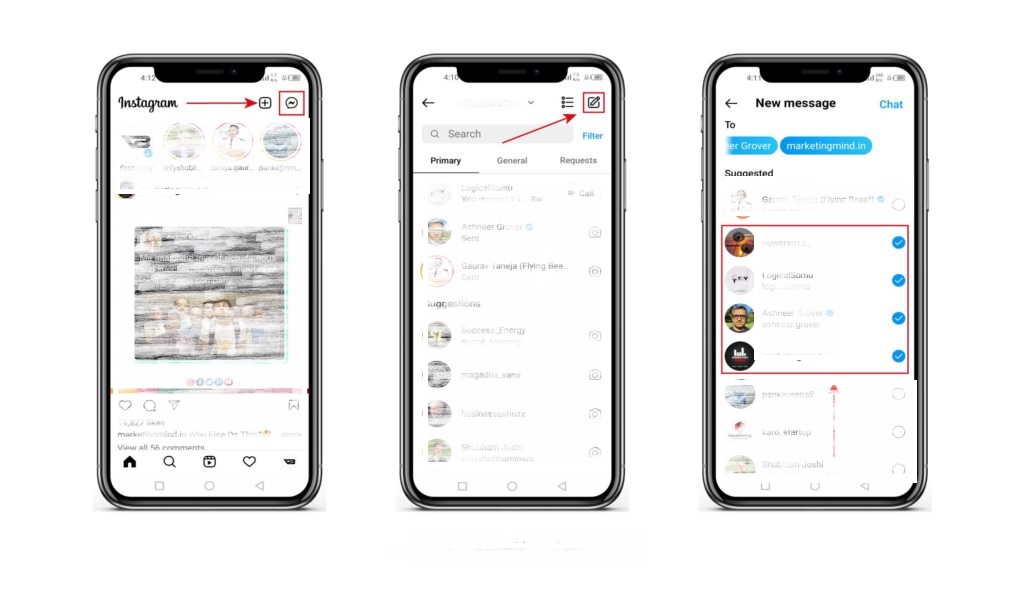what is the perfect social media strategy
Creating the perfect social media strategy involves a combination of careful planning, understanding your audience, and adapting to the dynamic nature of social media platforms. While there isn’t a one-size-fits-all approach, the following elements are essential for building an effective social media strategy:
- Define Clear Goals:
- Establish specific, measurable, achievable, relevant, and time-bound (SMART) goals for your social media efforts.
- Common goals include increasing brand awareness, driving website traffic, boosting engagement, and generating leads or sales.
- Know Your Audience:
- Conduct thorough research to understand your target audience’s demographics, interests, and behaviors.
- Tailor your content to resonate with your audience and solve their problems or meet their needs.
- Choose the Right Platforms:
- Select social media platforms that align with your target audience and business objectives.
- Consider the strengths and characteristics of each platform and focus on the ones where your audience is most active.
- Create Quality Content:
- Develop engaging and shareable content that aligns with your brand voice and resonates with your audience.
- Use a mix of visuals, videos, and written content to keep your feed diverse and interesting.
- Consistent Branding:
- Maintain a consistent brand identity across all social media platforms, including logo, colors, and messaging.
- Consistency builds brand recognition and trust among your audience.
- Establish a Content Calendar:
- Plan and schedule your social media posts in advance using a content calendar.
- Ensure a balanced mix of content types and maintain a consistent posting schedule.
- Engage with Your Audience:
- Actively respond to comments, messages, and mentions to foster engagement.
- Participate in relevant conversations and encourage user-generated content.
- Utilize Paid Advertising Strategically:
- Incorporate paid advertising to amplify your reach and achieve specific business objectives.
- Use targeting options to reach your ideal audience and regularly analyze ad performance.
- Monitor Analytics:
- Regularly track key performance indicators (KPIs) using platform analytics.
- Analyze data to understand what is working well and adjust your strategy accordingly.
- Stay Updated on Trends:
- Keep abreast of social media trends and updates to stay relevant and maintain a fresh approach.
- Experiment with new features and formats to see what resonates with your audience.
- Incorporate Influencer Marketing:
- Collaborate with influencers who align with your brand and have a following that matches your target audience.
- Influencers can help increase brand credibility and reach a wider audience.
- Encourage User Participation:
- Run contests, polls, or user-generated content campaigns to encourage audience participation.
- User involvement strengthens community engagement and loyalty.
- Adapt and Optimize:
- Be flexible and willing to adapt your strategy based on the evolving social media landscape.
- Regularly review your performance metrics and optimize your strategy for continuous improvement.
- Invest in Social Listening:
- Monitor conversations about your brand, industry, and competitors using social listening tools.
- Use insights gained to refine your strategy and address any issues or concerns raised by your audience.
Educate and Inform:
-
- Share informative content related to your industry or niche.
- Establish your brand as an authority by providing valuable insights and educational resources.
- Humanize Your Brand:
- Showcase the human side of your brand by sharing behind-the-scenes content, employee spotlights, and company culture.
- People connect with people, so humanizing your brand fosters a more genuine connection with your audience.
- Community Building:
- Actively build and nurture a community around your brand.
- Encourage discussions, create a sense of belonging, and celebrate milestones with your audience.
- Leverage User-Generated Content (UGC):
- Encourage your audience to create and share content related to your brand.
- Repurpose UGC in your own content to showcase the authenticity and loyalty of your community.
- Optimize for Mobile Users:
- Ensure that your content is mobile-friendly, as a significant portion of social media users access platforms via mobile devices.
- Optimize visuals and ensure a seamless experience for users on smartphones and tablets.
- Embrace Storytelling:
- Tell compelling stories that resonate with your audience.
- Narratives create an emotional connection, making your brand more memorable.
- Collaborate with Partners:
- Explore partnerships and collaborations with other brands or influencers in your industry.
- Coordinated efforts can expand your reach and introduce your brand to new audiences.
- Employ Hashtag Strategies:
- Develop and use branded hashtags to promote campaigns and encourage user participation.
- Research and leverage trending industry or community hashtags for broader visibility.
- Geo-Targeting:
- Implement geo-targeting to reach specific audiences based on location.
- Tailor content and promotions to cater to the interests and needs of local communities.
- Crisis Management Protocol:
- Establish a crisis management plan for handling negative situations or controversies.
- Respond promptly and transparently to address concerns and maintain a positive brand image.
- Social Media Advocacy:
- Encourage employees to become social media advocates for your brand.
- Provide guidelines and share company updates to amplify your reach through employee networks.
- Test Different Ad Formats:
- Experiment with various ad formats (carousel, video, slideshow) to understand what resonates best with your audience.
- Different formats may perform better for different objectives.
- Long-Term Planning:
- Develop a long-term social media calendar aligned with your overall marketing strategy.
- Plan seasonal campaigns, product launches, and other events well in advance.
- Accessibility and Inclusivity:
- Ensure that your content is accessible to a diverse audience, including those with disabilities.
- Use alt text for images, provide captions for videos, and prioritize inclusivity in your messaging.
- Regular Audits and Updates:
- Conduct regular audits of your social media strategy to identify areas for improvement.
- Stay updated on platform algorithm changes and adjust your strategy accordingly.
- Celebrate Milestones:
- Acknowledge and celebrate significant milestones, both for your brand and your audience.
- Milestone celebrations contribute to a positive brand image and foster a sense of community.
Remember, a successful social media strategy is dynamic and requires ongoing optimization based on analytics, industry trends, and the evolving preferences of your audience. Regularly reassess your approach to ensure it remains aligned with your business objectives and the ever-changing landscape of social media.
Integrated Cross-Channel Marketing:
-
- Integrate your social media efforts with other marketing channels, such as email marketing, content marketing, and SEO.
- Consistent messaging across channels reinforces your brand identity and improves overall marketing effectiveness.
- Interactive Content Strategies:
- Implement interactive content like polls, quizzes, and surveys to boost engagement.
- Interactive content encourages participation, increases time spent on your platforms, and enhances the user experience.
- Personalized Messaging:
- Tailor your messaging to different segments of your audience based on their preferences and behaviors.
- Personalized messages resonate more with users and contribute to a more meaningful connection.
- Social Media Contests and Giveaways:
- Run contests or giveaways to encourage user participation and increase brand visibility.
- Contests generate excitement and create a buzz around your brand, often leading to increased follower engagement.
- Invest in Social Media Advertising Tools:
- Explore the use of social media advertising tools and platforms for more efficient campaign management.
- Tools like Facebook Ads Manager or LinkedIn Campaign Manager offer advanced features for targeted advertising.

- Employee Training on Social Media Policies:
- Provide employees with training on social media policies to ensure consistent brand representation.
- Educated employees can become valuable advocates for your brand online.
- Utilize Ephemeral Content:
- Incorporate ephemeral content, such as Instagram Stories or Snapchat Snaps, for timely and temporary updates.
- Ephemeral content creates a sense of urgency and can be effective for promotions and behind-the-scenes glimpses.

- Social Media Listening for Insights:
- Employ social media listening tools to monitor conversations about your brand, industry, and competitors.
- Extract valuable insights to adapt your strategy, address concerns, and capitalize on emerging trends.
- Strategic Partnerships and Collaborations:
- Form strategic partnerships or collaborations with other brands, influencers, or organizations.
- Collaborative efforts can introduce your brand to new audiences and create mutually beneficial relationships.
- Live Video Streaming:
- Embrace live video streaming for real-time engagement with your audience.
- Live videos create a sense of immediacy and authenticity, offering a unique way to connect with your followers.
- Customer Feedback Integration:
- Actively integrate customer feedback into your strategy.
- Use feedback to make improvements, address concerns, and showcase your commitment to customer satisfaction.
- Diversify Content Formats:
- Experiment with various content formats, including infographics, podcasts, and eBooks.
- Diversifying content keeps your audience engaged and caters to different learning and consumption preferences.
- Social Media Policies and Guidelines:
- Establish clear social media policies and guidelines for your team to maintain a consistent brand voice.
- Guidelines help ensure that your team aligns with your overall social media strategy.
- In-Depth Analytics Reporting:
- Dive deeper into analytics reporting to gain a comprehensive understanding of your social media performance.
- Utilize advanced analytics features to identify patterns, trends, and areas for improvement.
- Artificial Intelligence (AI) Integration:
- Explore AI tools for social media to automate tasks, analyze data, and enhance personalization.
- AI can optimize posting times, suggest content improvements, and contribute to a more efficient social media strategy.
Employee Advocacy Programs:
-
- Develop employee advocacy programs to encourage employees to share company content on their personal social media accounts.
- Employee advocacy can amplify your brand message and increase organic reach.
- Localized Content:
- Create content tailored to specific regions or local communities.
- Localized content helps build connections with regional audiences and demonstrates your brand’s awareness of local nuances.
- Incorporate Social Proof:
- Showcase customer testimonials, reviews, and user-generated content as social proof.
- Positive experiences shared by others enhance your brand’s credibility and influence purchasing decisions.
- Target Niche Communities:
- Identify and engage with niche communities relevant to your industry.
- Participate in discussions, share valuable insights, and build relationships within these specialized communities.
- Micro-Influencer Collaborations:
- Collaborate with micro-influencers who have smaller but highly engaged followings.
- Micro-influencers often have more authentic connections with their audience, leading to increased trust and impact.
- SEO-Friendly Social Media Profiles:
- Optimize your social media profiles for search engines.
- Include relevant keywords, a compelling bio, and a link to your website to enhance discoverability.
- Create Tutorials and How-To Content:
- Share tutorials, how-to guides, and educational content related to your products or industry.
- Position your brand as a valuable resource and establish authority in your niche.
- Monitor Competitor Activity:
- Keep a close eye on your competitors’ social media strategies.
- Analyze their content, engagement tactics, and audience interactions to identify opportunities and areas for differentiation.
- Host Virtual Events and Webinars:
- Host virtual events, webinars, or live Q&A sessions on your social media platforms.
- Live events foster real-time engagement and provide opportunities for direct interaction with your audience.
- Refresh Evergreen Content:
- Identify evergreen content that performs well and update it periodically.
- Refreshing content ensures its relevance and can extend its lifespan.
- Highlight Company Culture:
- Showcase your company culture through behind-the-scenes content, employee spotlights, and workplace stories.
- Humanizing your brand fosters a more personal connection with your audience.
- Create Infographics:
- Design and share infographics to convey complex information in a visually appealing way.
- Infographics are highly shareable and can increase your content’s reach.
- Mobile-Friendly Visuals:
- Optimize visuals for mobile devices to ensure a seamless user experience.
- Visually appealing, mobile-friendly content is more likely to capture and retain the attention of mobile users.
- Utilize Social Media Listening for Trends:
- Use social media listening tools to identify emerging trends in your industry.
- Stay ahead of the curve by incorporating relevant trends into your content strategy.
- Build Social Media Communities:
- Create and nurture dedicated communities or groups related to your brand on social media platforms.
- Communities provide a space for your audience to connect, share experiences, and discuss relevant topics.
- Interactive Challenges and Campaigns:
- Launch interactive challenges or campaigns that encourage user participation.
- Challenges can go viral and attract a wider audience while fostering a sense of community.
- Experiment with AR Filters and Lenses:
- Explore the use of augmented reality (AR) filters and lenses on platforms that support them.
- AR features add an interactive and creative element to your content.
- Strategic Retargeting:
- Implement retargeting strategies to re-engage users who have previously interacted with your brand.
- Tailor retargeting ads based on specific actions users have taken on your website or social media profiles.
- Optimize for Social Media Search:
- Optimize your content for social media search functions.
- Use relevant hashtags, keywords, and geotags to enhance discoverability.
- Accessibility Features:
- Prioritize accessibility by incorporating features such as alt text for images and closed captions for videos.
- Ensure that your content is inclusive and accessible to all users.
- Testimonial Video Series:
- Create a series of video testimonials featuring satisfied customers.
- Video testimonials add a human touch and can be powerful in building trust.
- Align Content with Sales Funnel:
- Map your social media content to different stages of the sales funnel.
- Create content that educates, engages, and converts users at each stage of their journey.
- Host Twitter Chats:
- Organize and participate in Twitter chats relevant to your industry.
- Twitter chats provide an opportunity for real-time discussions and networking.
- Dynamic Retargeting Ads:
- Implement dynamic retargeting ads that display products or content users have previously shown interest in.
- Dynamic ads enhance personalization and can lead to higher conversion rates.
- Invest in Employee Training:
- Provide ongoing training for your social media team to stay updated on platform changes, trends, and best practices.
- Continuous learning ensures that your team is equipped to adapt to the evolving social media landscape.
Remember, the effectiveness of your social media strategy is influenced by your ability to adapt, experiment, and stay attuned to the preferences of your audience. Regularly analyze performance metrics, seek feedback, and remain open to refining your strategy based on evolving trends and user behaviors.
Remember that the ideal social media strategy is fluid and adaptable. Regularly assess your performance metrics, stay updated on industry trends, and be prepared to adjust your strategy to meet the evolving needs and preferences of your audience and the ever-changing social media landscape.
Remember that the perfect social media strategy is unique to each business and may evolve over time. Regularly assess your goals, audience, and performance metrics to refine and enhance your approach.






